A mother of 2 in her later 20’s is bothered by a deflated appearance of her breasts after pregnancy, and also would like to be fuller. She describes herself as an A cup and would like to be a full C cup. She is shown before and again, 6 weeks after partial subpectoral breast augmentation with Sientra 440 cc smooth round cohesive high strength silicone gel implants placed through an inframammary incision.
Discussion: She is 5’4” and 150 lbs. She does not mind a mild implant appearance but wishes to be relatively natural in appearance. She has pseudoptosis, and could be at risk for a mild waterfall effect from a subpectoral placement but prefers this and a lower risk of capsular contracture to a subglandular placement where the implant drops with the breast
Her base width is 12.7 cm and the Inframammary fold to nipple distance on stretch is 8.5 cm. She has elected for a Sientra 10621-440 High profile smooth round implant which is 12.8 cm at the base and has 5.1 m in projection. This is just slightly larger in diameter than her base width and early on can give a mild implant appearance but will settle and look even more natural in a few months. A base of 12.5 cm would be perfect of and 8.5 cm nipple to IMF on stretch. Her IMF was reinforced with long lasting but dissolvable sutures at the time of surgery to prevent “bottoming out” and a potential double bubble formation- this give mild superior pole fullness early on but should settle with time as the breast stretches to accommodate the implant.
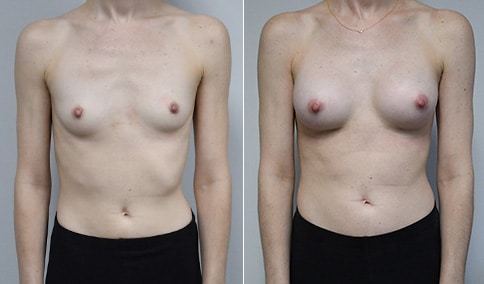
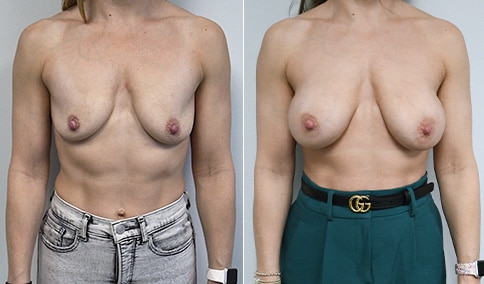
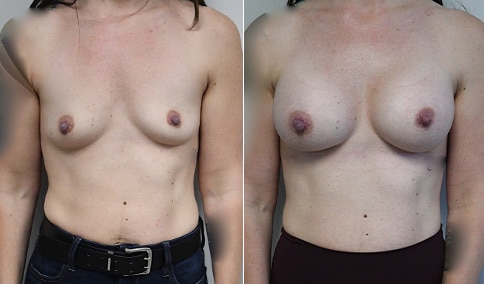
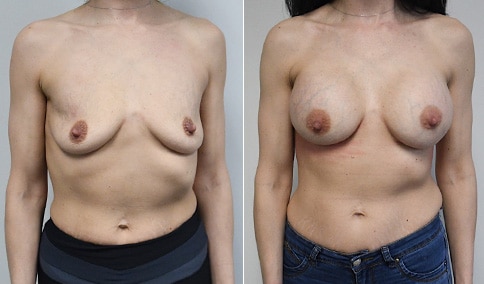
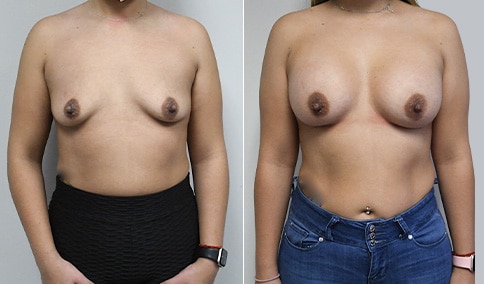
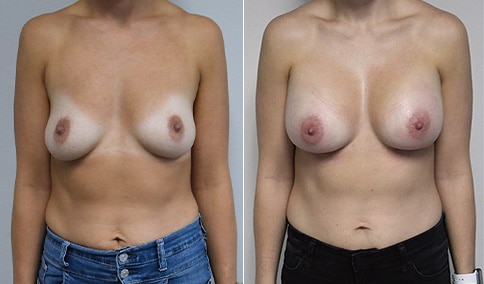

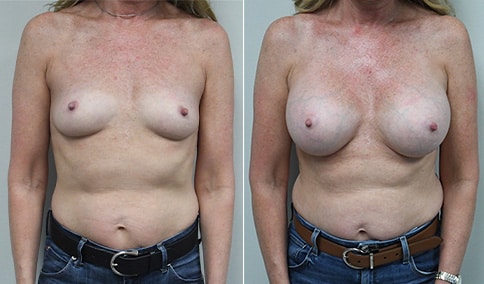
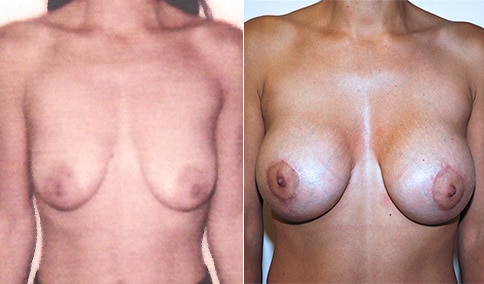
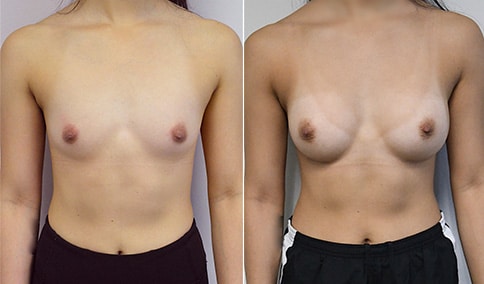
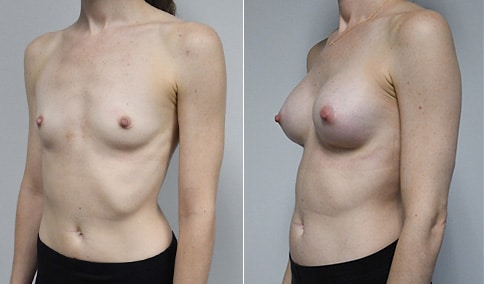
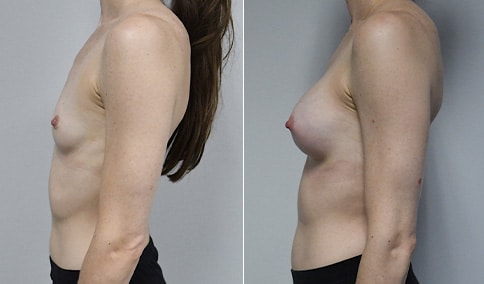
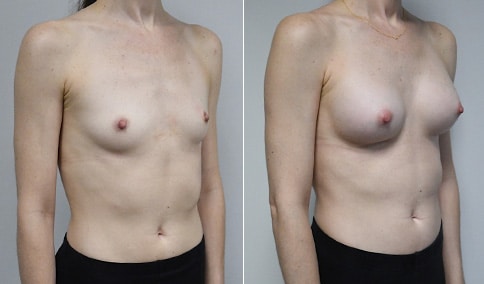
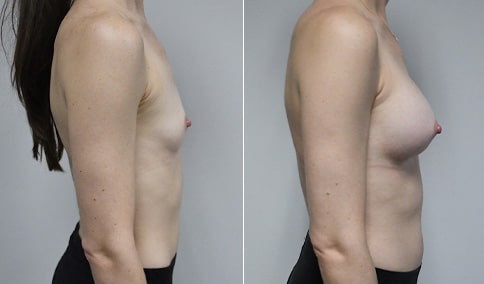
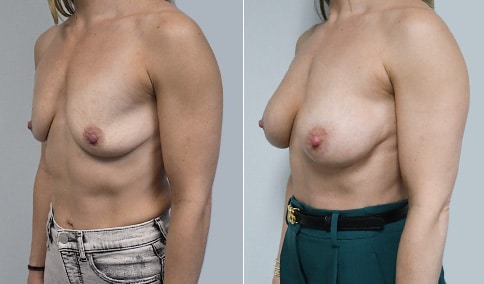
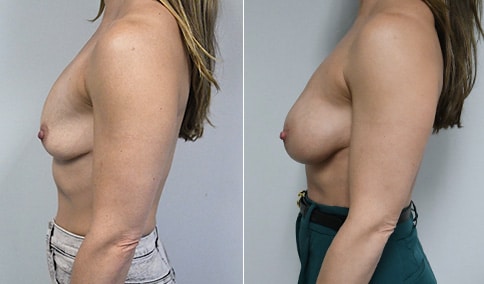
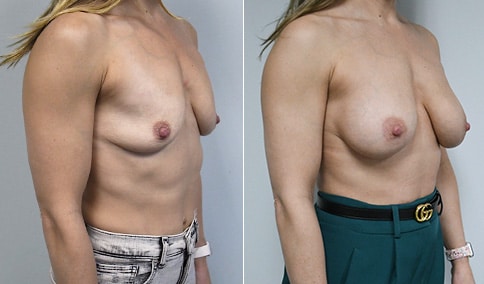
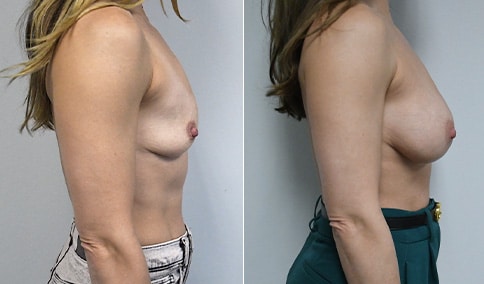

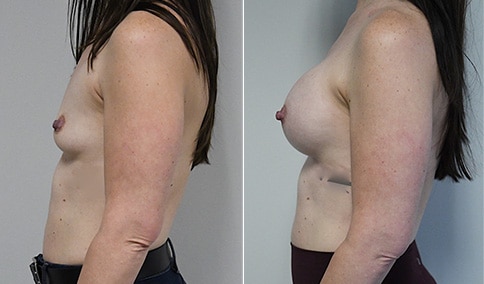
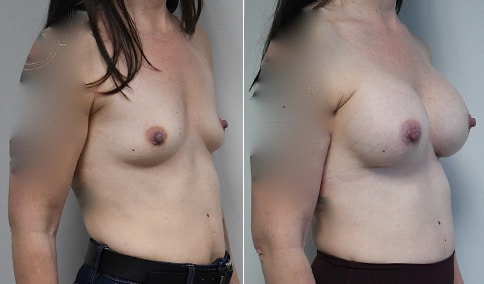
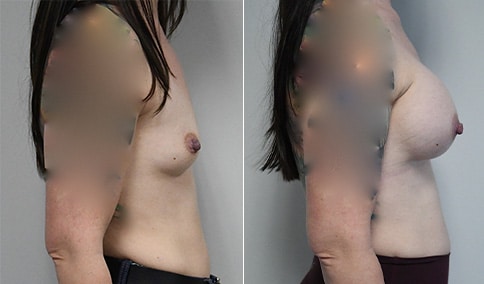
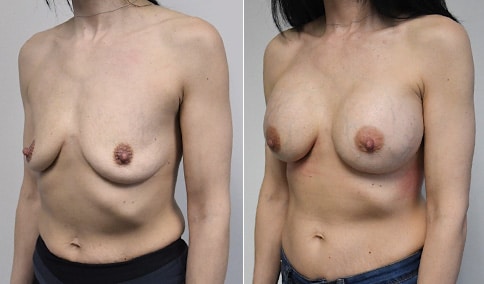
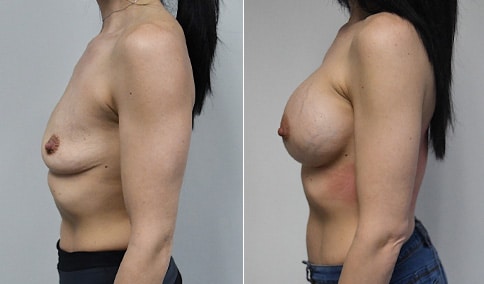
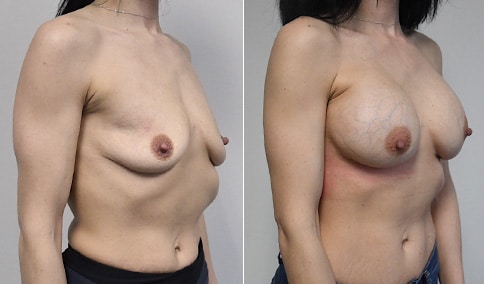
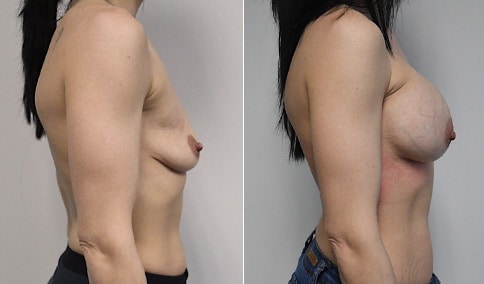
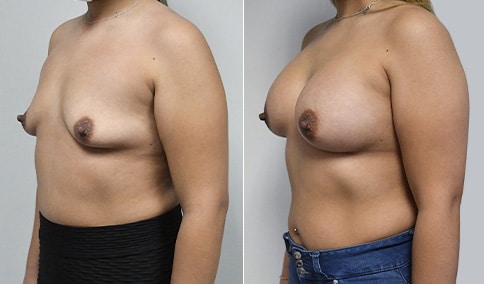
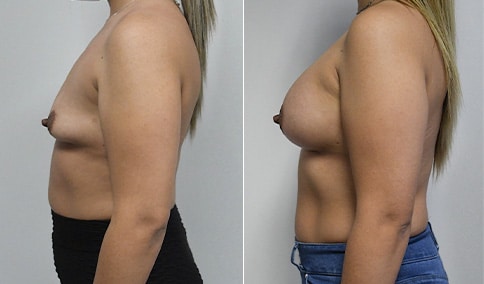
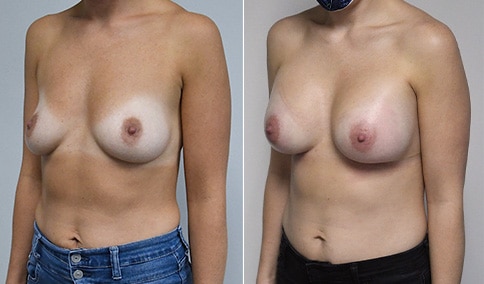
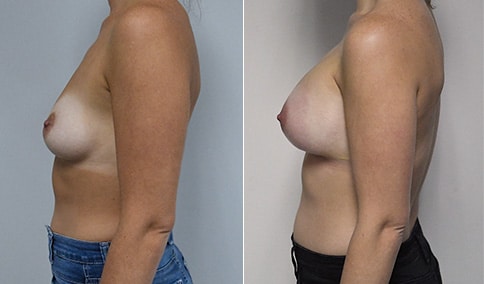
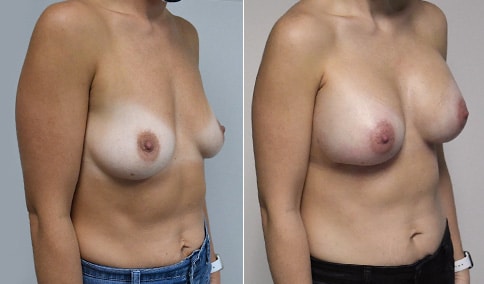
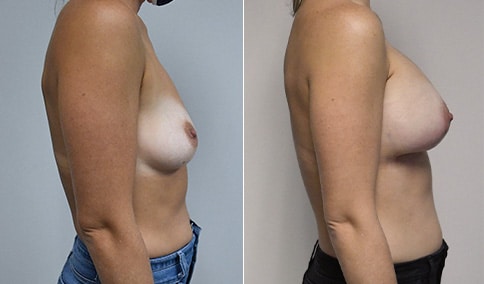
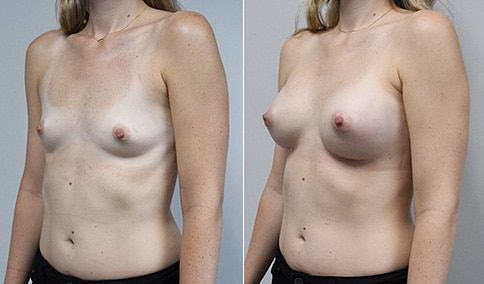
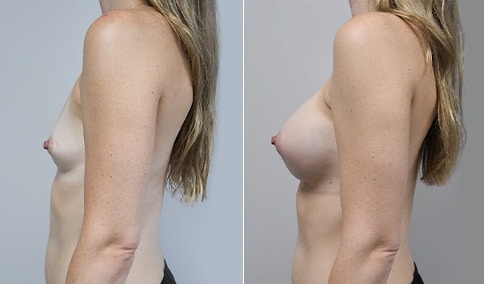
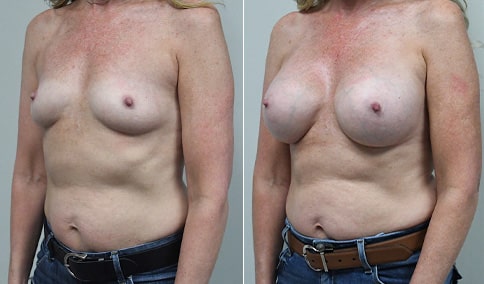
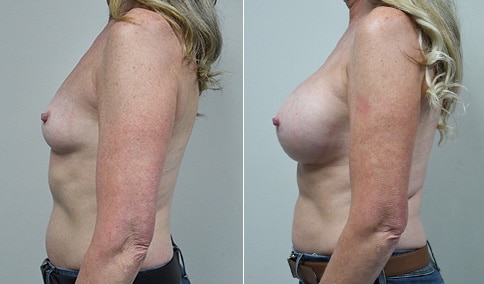
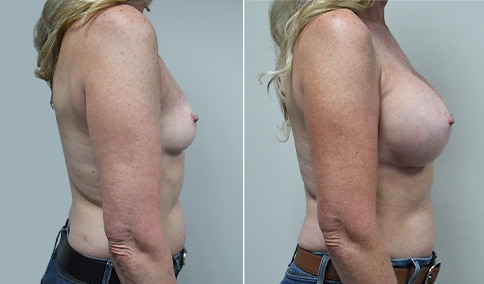
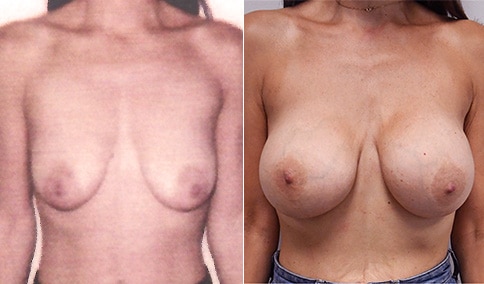
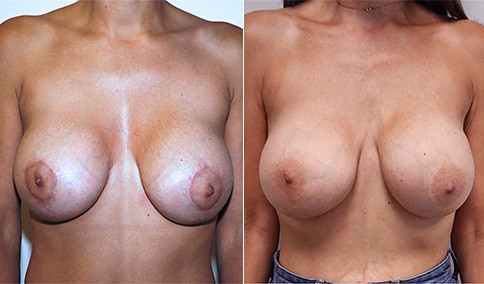
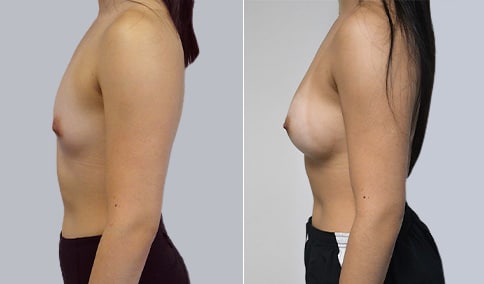
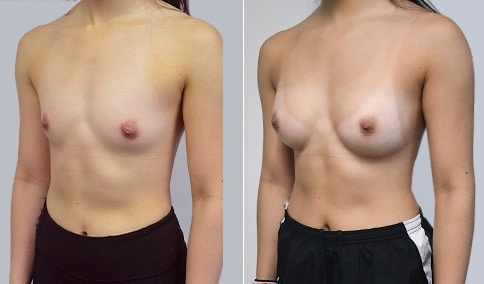
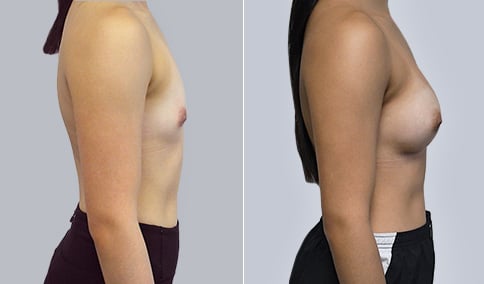
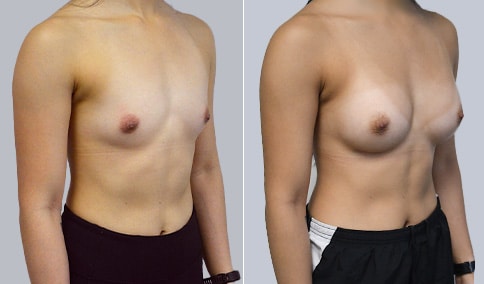





Cosmetic & Plastic Surgery Specialist
"I treat my patients like I would treat
- Jonathan D. Hall, MD, FACSmembers of my own family."
Schedule Consultation